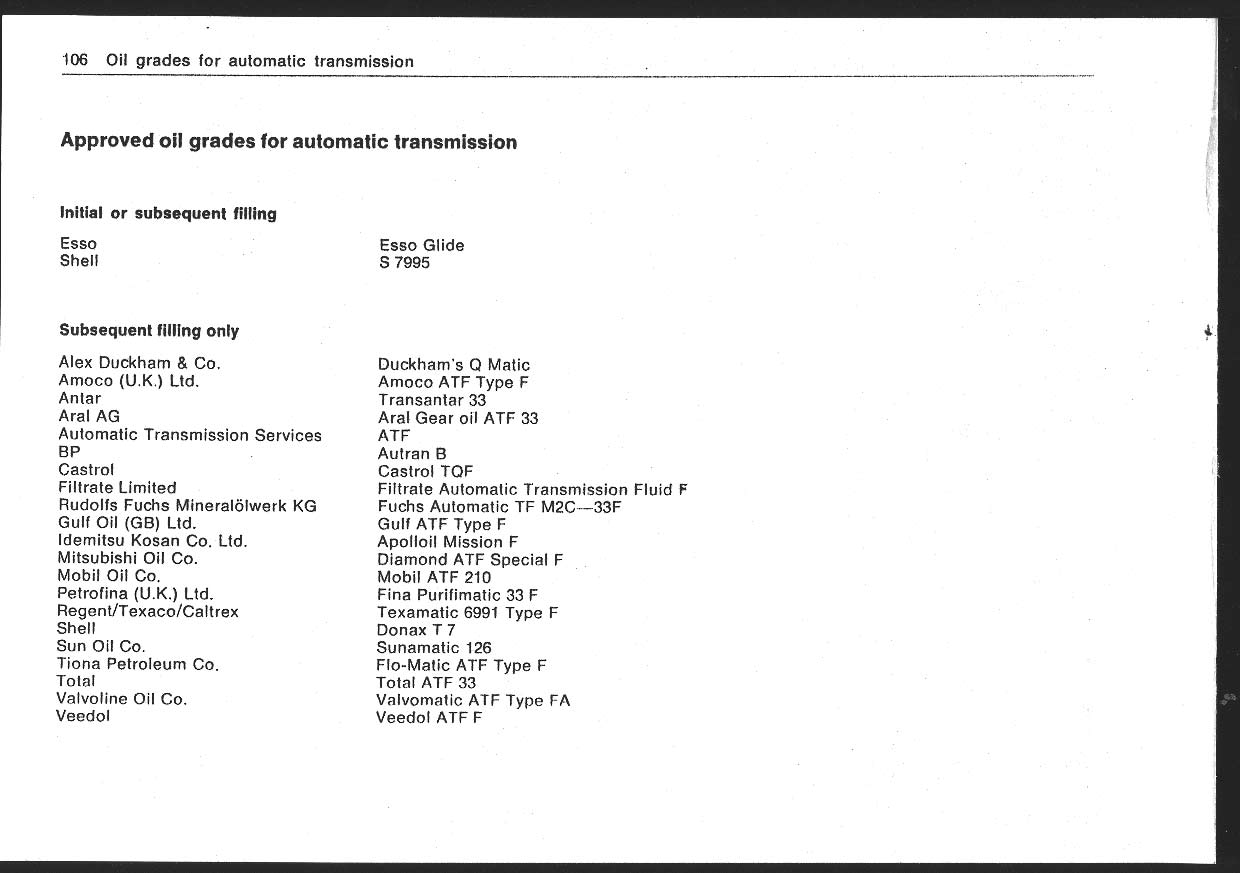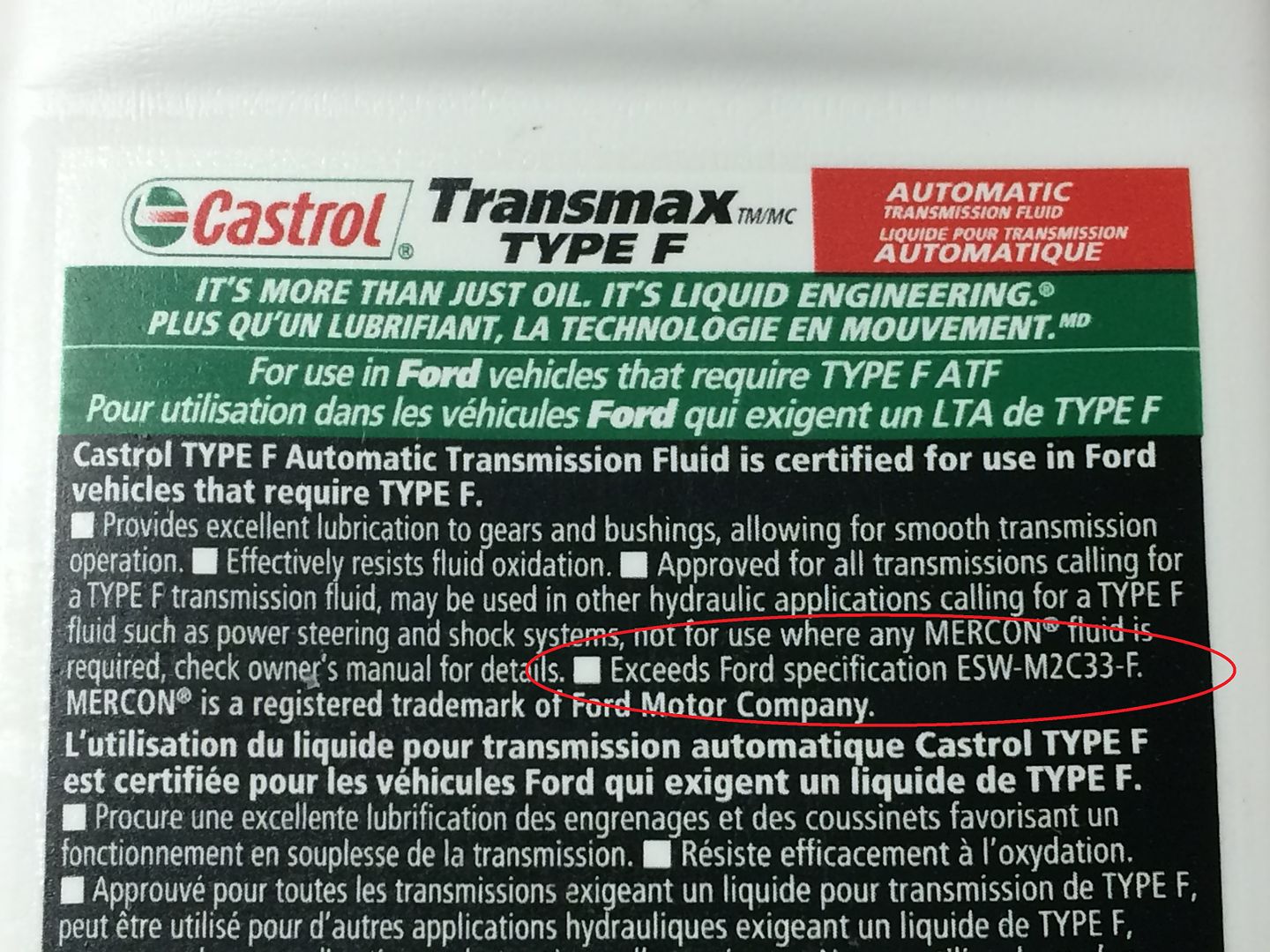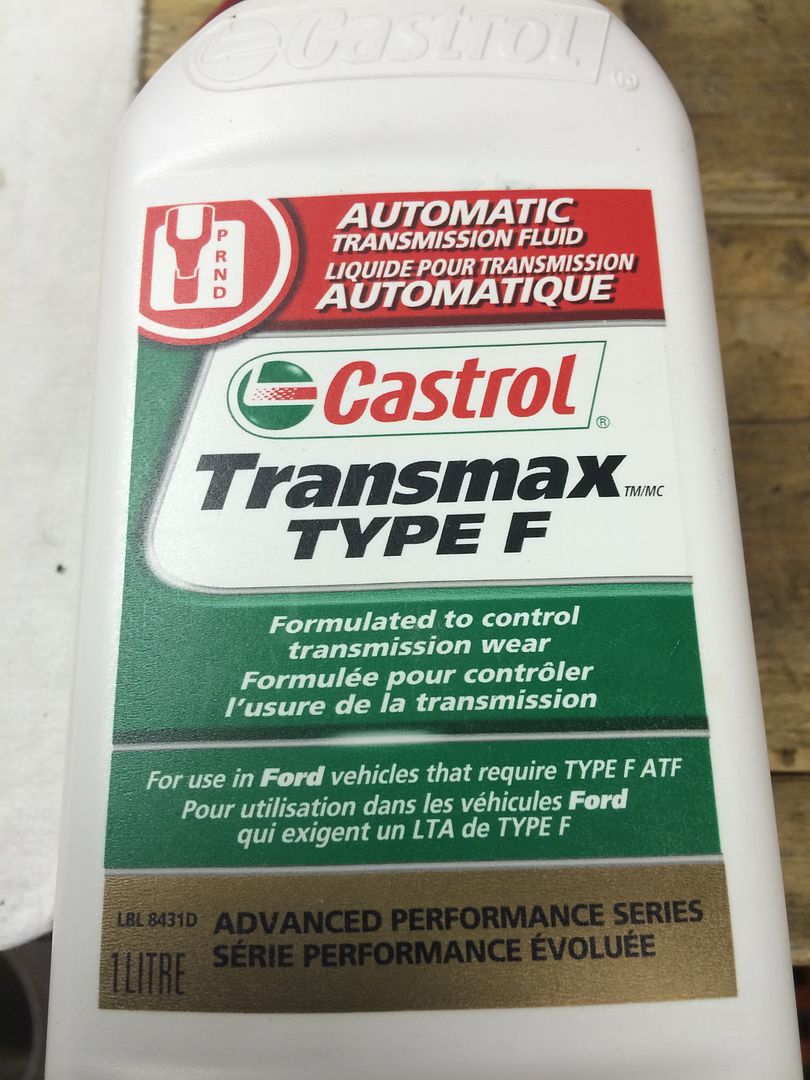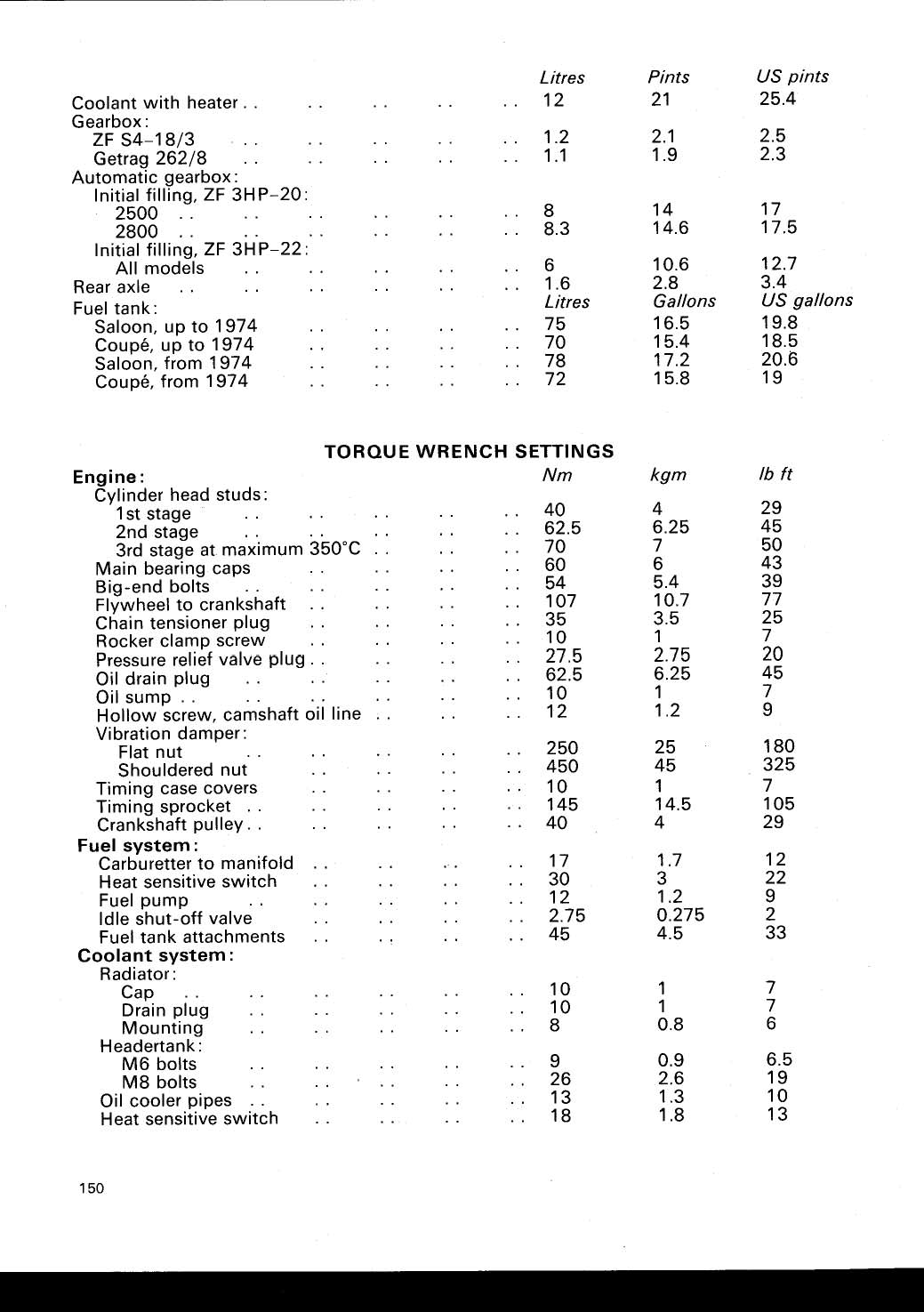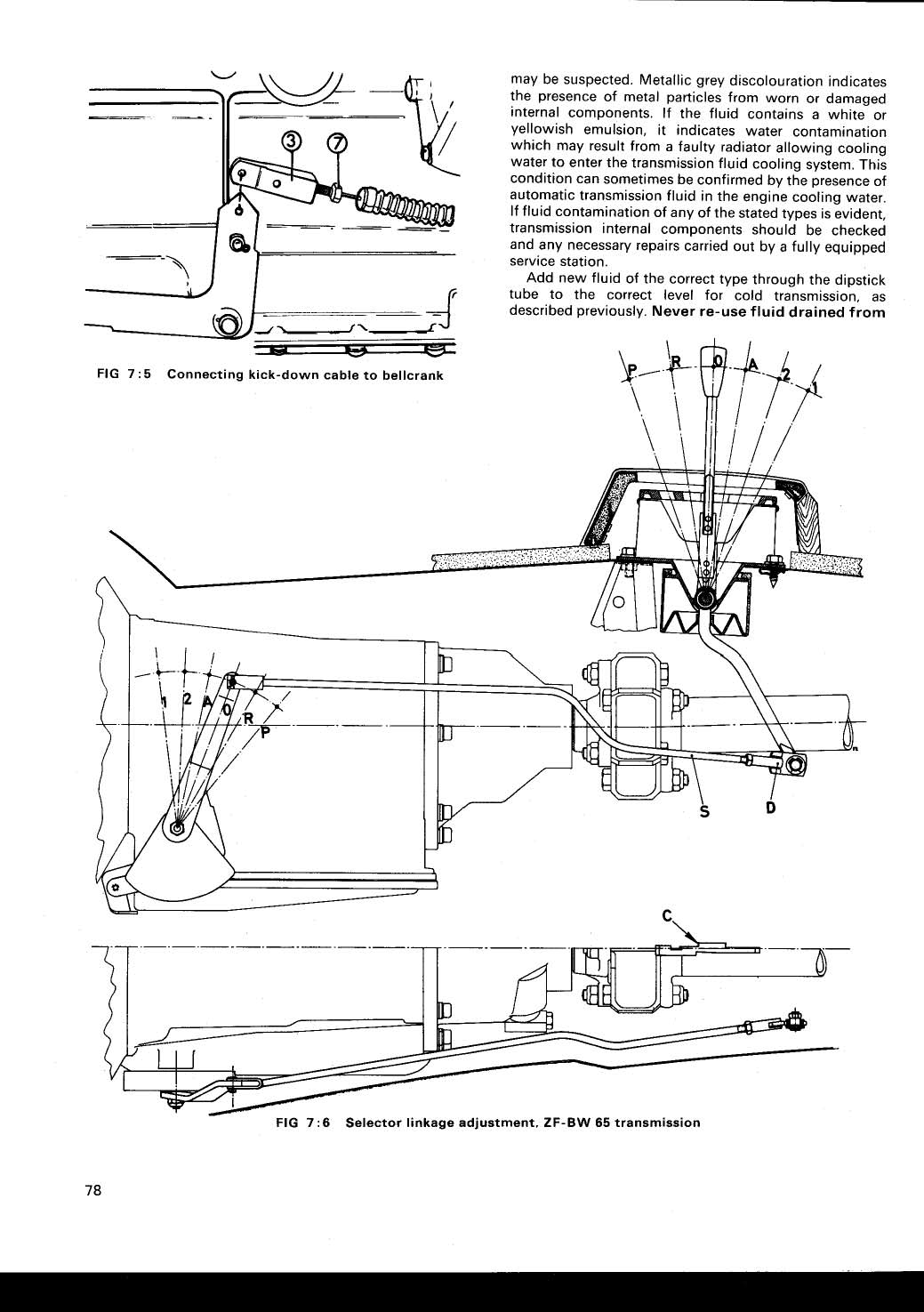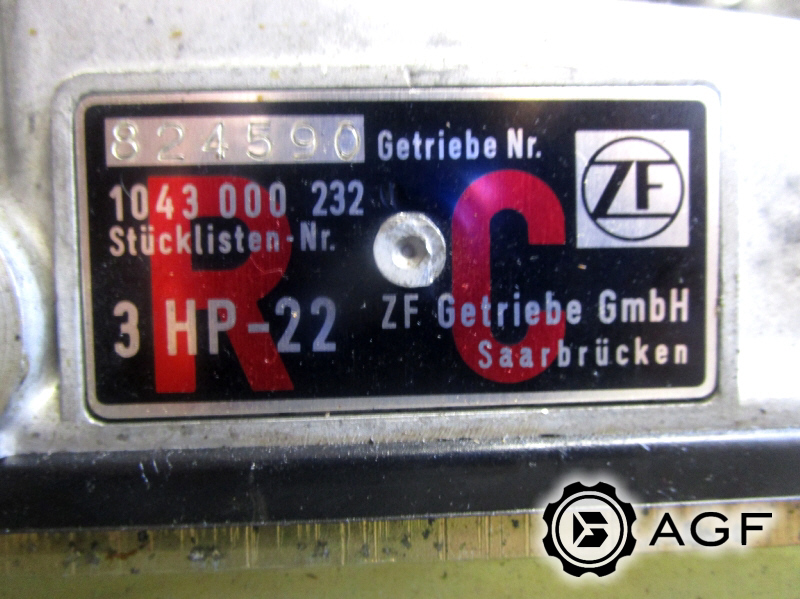�ATF is the most complex of all lubricating fluids. Not only does it have to reduce friction to prevent wear like all lubricants, but it also has to allow a certain level of friction so clutch materials can engage. Since most OEMs use proprietary frictional materials, virtually every ATF is OEM-specific. In some cases, they're transmission-specific. In addition, ATFs must be compatible with all transmission components, operate at both low and high temperature extremes, and maintain constant performance for extended periods.� We don�t know much about the early fluids used in these transmissions except they contained additives similar to engine oils and used the better base oils.
GM needed a specification to give to the lubrication industry and the Type A fluid was borne in
1947. Nothing is known about this additive package.
In 1957, ten years later, GM developed the
Type A Suffix A fluid specification and we know this fluid contained 16,250 ppm phosphorus, 37,500 ppm sulfur, 18,500 ppm of zinc, 130,000 ppm of Barium. This additive package was 6.2% by volume of the total fluid.
In 1959 Ford issued the M2C33-A/B specification. Nothing is known about that additive package.
In 1961, Ford issued the M2C33-C/D specification. Nothing much is know (at this time) about its additive package.
In 1967 and 1972, GM issued the Dexron specification which contained 3,500 ppm of phosphorus, 3,200 ppm of zinc, 7,500 ppm of nitrogen, 3,200 ppm of sulfur, and 4,500 ppm of Calcium. This additive package was 10.5% of the total fluid volume. The 1972 formulation specified better oxidation and Friction Modification.
In 1967, Ford introduced the M2C33- F �Type � F�� fluid which contained 12,000 ppm of phosphorus, 4,200 ppm of zinc, 4,000 ppm of Nitrogen, and 800 ppm of Barium.
This additive package was 9% of the total fluid volume.
In 1972, Ford introduced the M2C33- G fluid to the European market with slightly better oxidation specs and enhanced Friction Modification.
In 1973 GM specified another Dexron fluid called Dexron II with enhanced friction modification.
In 1974, ford introduced the M2C138-CJ specification and in 1981 the M2C166-H specification. In 1987 they introduced the first Mercon specification.
Mercon V is now specified for use for all AODE and 4R70W transmissions
GM�s Dexron III and III(G) fluids were current fills prior to 2004.
The specifications for a good Dexron III fluid generally show a 7.0 to 7.75 cSt Kinematic Viscosity (at 100 C) and a 40 C viscosity of 35 cSt. Flash points are about 367 F, pour points are -60 F, and sulfur is 2200 ppm with phosphorus being 620 ppm. The SUS viscosities are 17,500 cP at -40 F and 1,350 SUS for -10 F.
Usually you will see this statement for Dexron III/Mercon Fluids:
�The Dexron III/Mercon automotive transmission fluid (ATF) is generally recommended as a replacement fluid for automatic transmissions meeting original equipment manufacturers (O.E.M.) performance requirements for current General Motors, Ford, other domestic and imported passenger cars, vans and light trucks where DEXRON II, DEXRON II-E, DEXRON III, AND Ford/MERCON fluids are specified. The product can also be used as make-up and full fill fluid in Chrysler transmissions; however, it should be noted that Chrysler MS-7176 type fluid should be used when specified to satisfy warranty requirements.
https://www.bobistheoilguy.com/forums/ubbthreads.php?ubb=showflat&Number=729055

